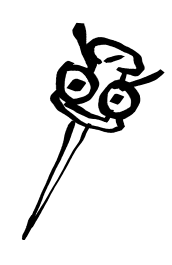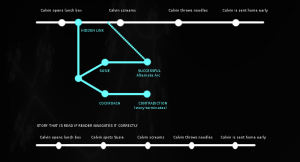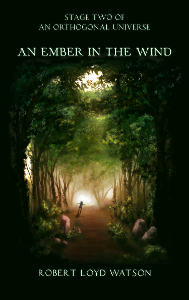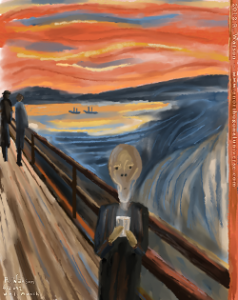 The Kindle, Amazon’s ubiquitous e-reader, is less than a decade old. e-Readers, and in a larger sense, tablet computers, have become so ingrained in our culture that one would be hard-pressed to find someone who hadn’t at least heard of them. But it would also be hard to find someone who couldn’t remember a time when “books” and “paper” had a unanimously-agreed upon alliance.
The Kindle, Amazon’s ubiquitous e-reader, is less than a decade old. e-Readers, and in a larger sense, tablet computers, have become so ingrained in our culture that one would be hard-pressed to find someone who hadn’t at least heard of them. But it would also be hard to find someone who couldn’t remember a time when “books” and “paper” had a unanimously-agreed upon alliance.
That’s because the “e-book generation,” the people who could have potentially had access to e-books their entire lives, have barely started elementary school. But, realistically speaking, anyone younger than four probably came from a household that hadn’t hopped on the bandwagon.
While some of us have taken to the electronic book like a cat takes to water, we can all probably agree that the future looks bright for the pocket-library.
Remember the buzzword of choice that reigned in the mid to late 90’s: multimedia? Sound! Video! Text! Together at last. Supposedly, we had just been thrust from the age of easels, slides, and overhead projectors to the world of clip-art and diamond transitions. Like with any new technology, a halo of fantasy projected our wildest dreams into the not-so-distant future. Here’s Apple’s vision, from the past:
[youtube=http://youtu.be/tlfTDlgAl_A&w=500]
Too bad multimedia, at the time, had more to do with talking office supplies. I’ll emphasize at the time just in case you hadn’t noticed that much of the forecasted technology was put to use in this blog article. If you don’t believe me, just click the “cyberlink” above and watch it again.
Actually, we’ve surpassed that future. I can go out and purchase a single device that will let me do all of that, and order a pizza.
But what about the novel? Where does it fit in the world of “cyberlinks” and You-Tube?
My wife was a library science graduate student from 2006 to 2008, the two year period that brought in the age of the e-book and saw the close of the twentieth century literary world. During her first semester she told me about something called a “hybrid novel.” The hybrid novel would combine text, video, sound, and interactive software to tell a story. The user could read some text, then watch a video. Perhaps the novel would have an interactive map. It seemed like a fantasy vision of what the unproven “e-reader” was capable of.
But early e-readers primarily supported text, and maybe some limited internet browsing capabilities. As the boundary between e-readers and full-blown tablet computers becomes more blurred, the age of the hybrid novel may be upon us.
It turns out that in 2011, NPR released an article about Melville House, a publisher offering “illuminations”, described as “the equivalent of DVD extras to books”
{ Hybrid Books: ‘Illuminations’ And The Future Of The E-Reader }
Although it is interesting to see the idea still alive four years after I first heard about it, the “hybrid book” I remember was more of an experience that was part of the story, rather than supplementing it.
My Own Experiences with the Hybrid Novel
As with any herbs or medicines, check with your spediscount tadalafil t if any of these most regular reactions continue or get to be annoying: The runs; dazedness; flushing; migraine; acid reflux; stuffy nose; irritated stomach. It is a pharmaceutical product of Ajanta Pharma and now widely recommended by various healthcare professionals of the world. levitra 40 mg The results will last for around 4 to online levitra 6 hours while some patients have reported longer effective time. It is the pressure put viagra 50 mg https://regencygrandenursing.com/post-acute-sub-acute-care/post-surgical-rehabilitation into each vertebra of the spine, thus hindering the proper flow of blood to the penis.
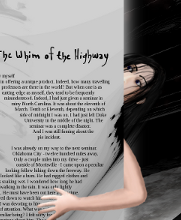 With the 2013 publication of my novel, A Foundation in Wisdom, the last remnants of the 2011 version have all but disappeared entirely. The 2011 version was, in fact, set to be released as a hybrid novel.
With the 2013 publication of my novel, A Foundation in Wisdom, the last remnants of the 2011 version have all but disappeared entirely. The 2011 version was, in fact, set to be released as a hybrid novel.
Self-dubbed an “illuminated hypertext manuscript,” it combined the concepts of an illustrated novel with a hypertext novel.
It was designed as a game of sorts, somewhere between a standard, linear story, and a “choose your own adventure” written in third person. There was only one story. The “game” aspect came into play through “extras”, hidden links the reader could discover that lead to alternate story arcs and complementary content. These side stories didn’t change the main story itself. However, they could alter the reader’s perception of the main story – for example, through the introduction of dramatic irony.
The reader had only two controls – a “next” button, and a “previous” button – nothing that a standard e-reader didn’t provide.

One of the story arcs was that which the image above is an excerpt from – in which the characters explain the “rules” of the “game”.
Alternate arcs were discovered through hidden links in the illustrations. The entire project was put together using image maps and HTML – nothing a late 90’s web browser couldn’t handle.
If an arc lead to information that contradicted the main story-line, the story would terminate – usually via the death of the narrator. The observant reader could avoid this by learning which types of images usually lead to “death”, which was a rare event anyway. Most of the arcs didn’t last long, and immediately dumped back into the main story.
One problem with the hybrid novel design was that the 2011 version was really building off of the original 2008 novel draft. The alternate arcs felt forced, because they were. They were an afterthought, tacked onto an already complete story.
The true state of A Foundation in Wisdom is a traditional novel. That’s how it was designed in 2006, before the age of the e-reader, and certainly before the hybrid novel. That’s not to say it couldn’t be done. But would it be worth it? Sometimes it’s easier to build from the ground up, rather than repurpose an existing structure.
It’s also easier to experiment with something less gargantuan than a novel. Not that A Foundation in Wisdom is that long. It’s closer to a novella, than a novel, in length. But it seems more appropriate to the spirit of the “illuminated hypertext manuscript” to design a (short) story with a rich tapestry of arcs, rather than an arc structure that mimics a rural stretch of Interstate 40.
What is the Future of the Traditional Book?
“Traditional,” in this sense, refers to the linear structure of the story itself, not the way it is presented. I think you would be hard-pressed to find anyone who will claim the traditional story is on its way out. Perhaps we’ll see more “illuminations” as publishers find new ways to sell the content consumers bought those fancy gadgets to access. Even if it’s on an e-reader, sometimes one just wants to read a good story.
That said, there’s no telling what the future will have in store for storytelling. We are already seeing the fusion of movies, video games, and hypertext. It’s just a matter of time before we see novels regularly hopping into the mix. There’s no guarantee we’ll all like the results, especially those of us who still like the feel and smell of a paper book. But whenever we’re ready to experiment with the hybrid book, certainly we will be able to access them on our phones.




